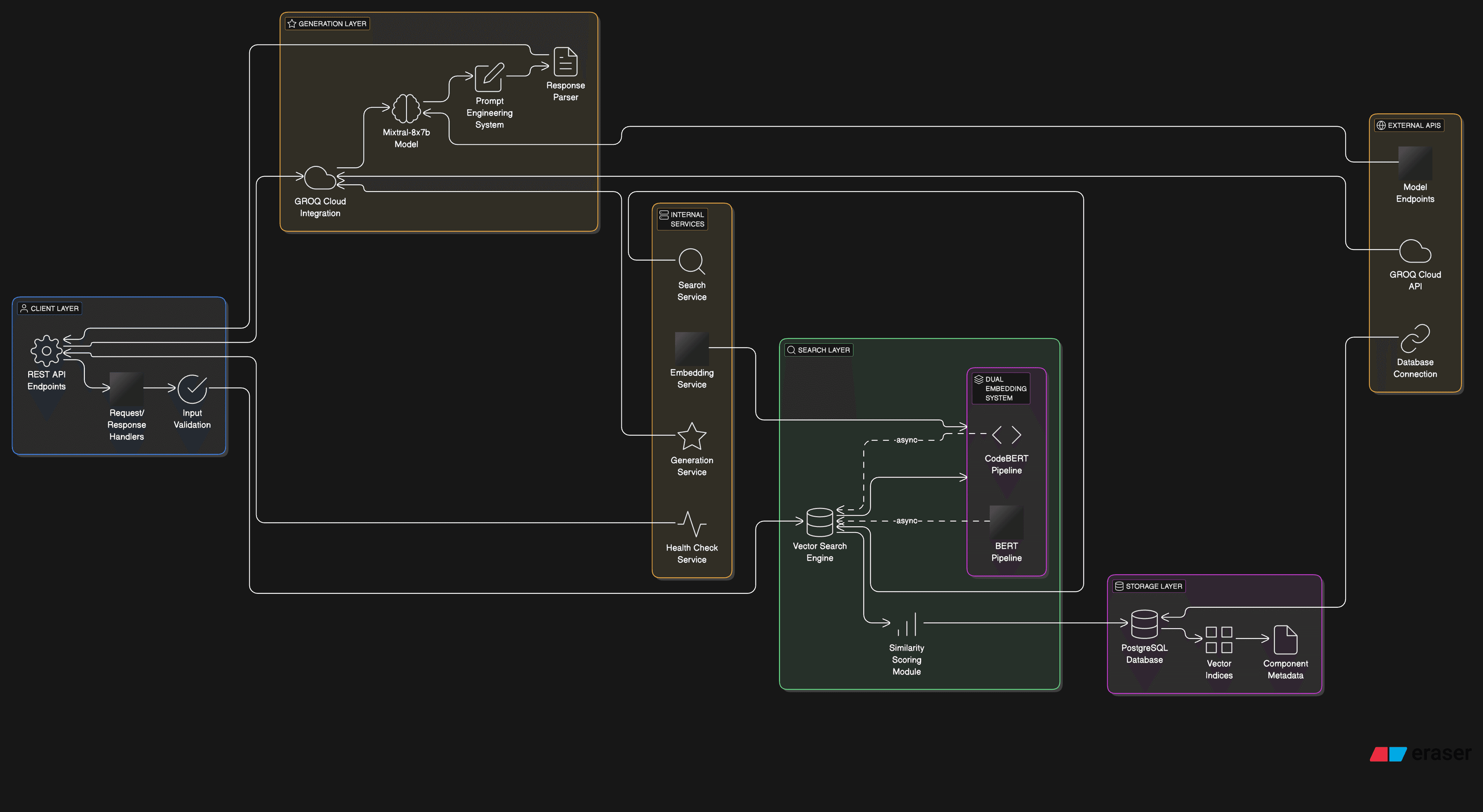S0: Revolutionizing UI Development with AI-Powered Component Search & Generation
S0: Revolutionizing UI Development with AI-Powered Component Search & Generation
"The future of software development lies not in writing more code, but in composing existing solutions in novel ways." - Alan Kay
"The best code is no code at all. Every new line of code you willingly bring into the world is code that has to be debugged, code that has to be read and understood, code that has to be supported." - Jeff Atwood
Introduction
The modern web development landscape is plagued by a peculiar paradox: despite the abundance of UI components and design systems, developers still spend countless hours reimplementing similar interfaces. S0 addresses this challenge by introducing a novel approach that combines advanced vector search capabilities with state-of-the-art generative AI to revolutionize how we discover and create UI components.

The Innovation: Vector-Based Component Search
At the heart of S0 lies a sophisticated dual-vector search system that understands both code structure and semantic meaning. This approach enables developers to find components based on both technical requirements and natural language descriptions.

Technical Implementation
The system employs a dual-embedding approach:
- CodeBERT embeddings (768d) for understanding code structure and patterns
- BERT embeddings for semantic understanding of component descriptions
SELECT id, title, summary, code_snippet,
1 - (code_embedding <-> query_vector) as similarity
FROM code_components
ORDER BY code_embedding <-> query_vector
LIMIT 10
Component Analysis Pipeline
S0's component analysis pipeline provides deep insights into UI patterns and best practices through statistical analysis of thousands of components.
Key Metrics
- Average element density: 91.4 elements per component
- Form integration rate: 53.4%
- Button inclusion rate: 47%
- Most common Tailwind classes:
- bg-white (802 uses)
- flex (775 uses)
- mx-auto (768 uses)
AI-Powered Generation System
The generation system leverages GROQ's Mixtral-8x7b model to create components that are not just functional, but also follow best practices and accessibility guidelines.
Intelligent Prompt Engineering
const prompt = `Create a UI component based on this request: ${query}
Requirements:
1. Follow best practices for ${outputFormat}
2. Make it accessible (ARIA attributes)
3. Make it responsive
4. Include semantic elements
5. Follow component composition patterns
Reference components:
${similarComponents.map(c => c.code).join('\n')}
`;
Novel Features & Technical Contributions
1. Hybrid Vector Search
The system combines code and semantic vectors to provide more accurate search results:
const searchResults = await Promise.all([
searchByCodeVector(query),
searchBySemanticVector(query)
]);
2. Real-time Analysis
Component analysis happens in real-time, providing immediate insights:
const metrics = {
elementDensity: analyzeElementDensity(component),
accessibility: checkAccessibility(component),
responsiveness: assessResponsiveness(component)
};
3. Framework-Aware Generation
The system generates components optimized for different frameworks:
enum OutputFormat {
HTML = "html",
JSX_JS = "jsx-js",
JSX_TS = "jsx-ts"
}
Performance & Scalability
The system achieves impressive performance metrics:
- Average query time:
<200ms - Vector search complexity: O(log n)
- Generation latency: 2-4 seconds
Future Directions
-
Real-time Component Rendering
- Instant preview of generated components
- Live editing capabilities
-
Style Transfer
- Applying design systems automatically
- Theme adaptation
-
Component Composition
- Intelligent component combining
- Pattern-based composition
Conclusion
S0 represents a significant step forward in UI development tooling, demonstrating how AI can augment and accelerate the development process. By combining vector search with generative AI, it creates a bridge between design inspiration and implementation, potentially saving developers countless hours of work.
"The measure of intelligence is the ability to change." - Albert Einstein
As we continue to evolve S0, we're not just building a tool - we're reimagining how developers interact with and create user interfaces. The future of UI development lies not in writing more components, but in intelligently discovering, adapting, and generating them to meet our specific needs.